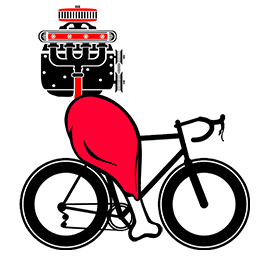SUMMARY FINDINGS
This research study found that trained cyclists who performed endurance training in warm conditions (33°C or 92°F) showed greater improvements in performance and cellular adaptations compared to cyclists training in cooler conditions (18°C or 64°F). We all know that training in the heat for a race in the heat is important for heat adaptation. However, this study found that the benefits of training in warm conditions also carried over when racing in cooler temperatures.
For competitive cyclists, this suggests that incorporating some moderate heat exposure during training blocks may provide extra benefits. Heat exposure during training led to greater increases in time trial performance, higher activity of the mitochondrial enzyme citrate synthase, and higher peak fat oxidation, which is the ability to burn fat for fuel. These physiological changes likely contributed to the performance improvements.
To apply these findings, cyclists can perform some longer aerobic rides during the warmer months or use indoor trainers with increased temperatures. However, the heat stress should remain moderate (around 92°F) and avoid extremes that could risk overheating or performance decrements. Staying properly hydrated will also be important for safety and maximizing adaptations. While evidence suggests the benefits of occasional heat exposure for performance, further research is still needed to determine optimal protocols.
STUDY ABSTRACT
Temperate performance and metabolic adaptations following endurance training performed under environmental heat stress
Endurance athletes are frequently exposed to environmental heat stress during training. We investigated whether exposure to 33°C during training would improve endurance performance in temperate conditions and stimulate mitochondrial adaptations. Seventeen endurance‐trained males were randomly assigned to perform a 3‐week training intervention in 18°C (TEMP) or 33°C (HEAT). An incremental test and 30‐min time‐trial preceded by 2‐h low‐intensity cycling were performed in 18°C pre‐ and post‐intervention, along with a resting vastus lateralis microbiopsy. Training was matched for relative cardiovascular demand using heart rates measured at the first and second ventilatory thresholds, along with a weekly “best‐effort” interval session. Perceived training load was similar between‐groups, despite lower power outputs during training in HEAT versus TEMP (p < .05). Time‐trial performance improved to a greater extent in HEAT than TEMP (30 ± 13 vs. 16 ± 5 W, N = 7 vs. N = 6, p = .04), and citrate synthase activity increased in HEAT (fold‐change, 1.25 ± 0.25, p = .03, N = 9) but not TEMP (1.10 ± 0.22, p = .22, N = 7). Training‐induced changes in time‐trial performance and citrate synthase activity were related (r = .51, p = .04). A group × time interaction for peak fat oxidation was observed (Δ 0.05 ± 0.14 vs. −0.09 ± 0.12 g·min−1 in TEMP and HEAT, N = 9 vs. N = 8, p = .05). Our data suggest exposure to moderate environmental heat stress during endurance training may be useful for inducing adaptations relevant to performance in temperate conditions.
E. Maunder, D. Plews, G. Wallis, M. Brick, W. Leigh, W. Chang, Casey M. Watkins, A. Kilding
Physiological Reports, 2021. Vol 9
Listen to the Two Minute Audio Summary

Jordan Fowler has experience as a head swimming coach of the Frisco Swim Team, a TAAF-awarded coach, a track and field distance running consultant for select Texas High School runners, and has competed as a triathlete, road runner, and cyclist. Though he is remarkably slower than he was in his 20s and 30s, he still enjoys endurance sports and sports science studies.
